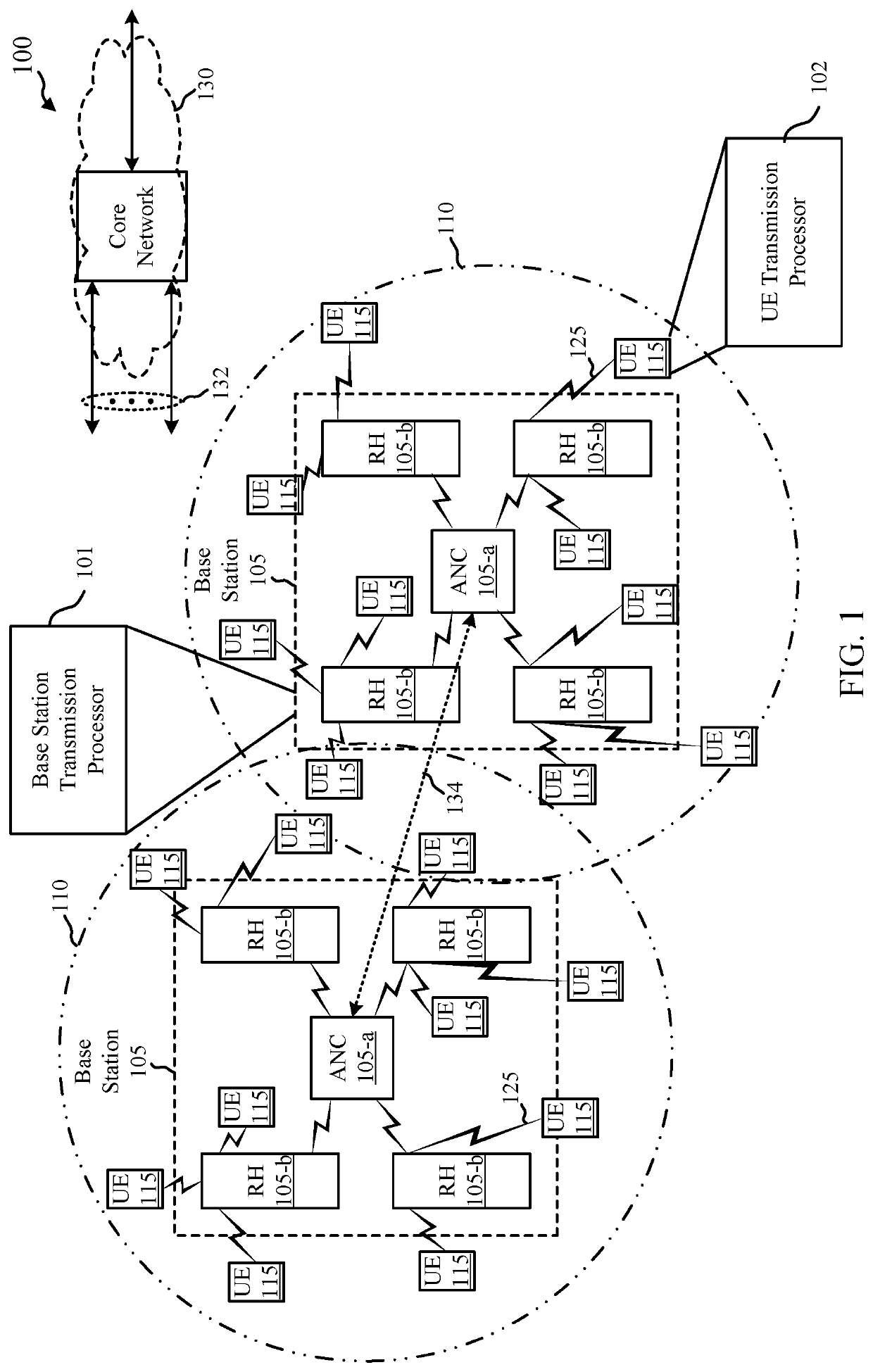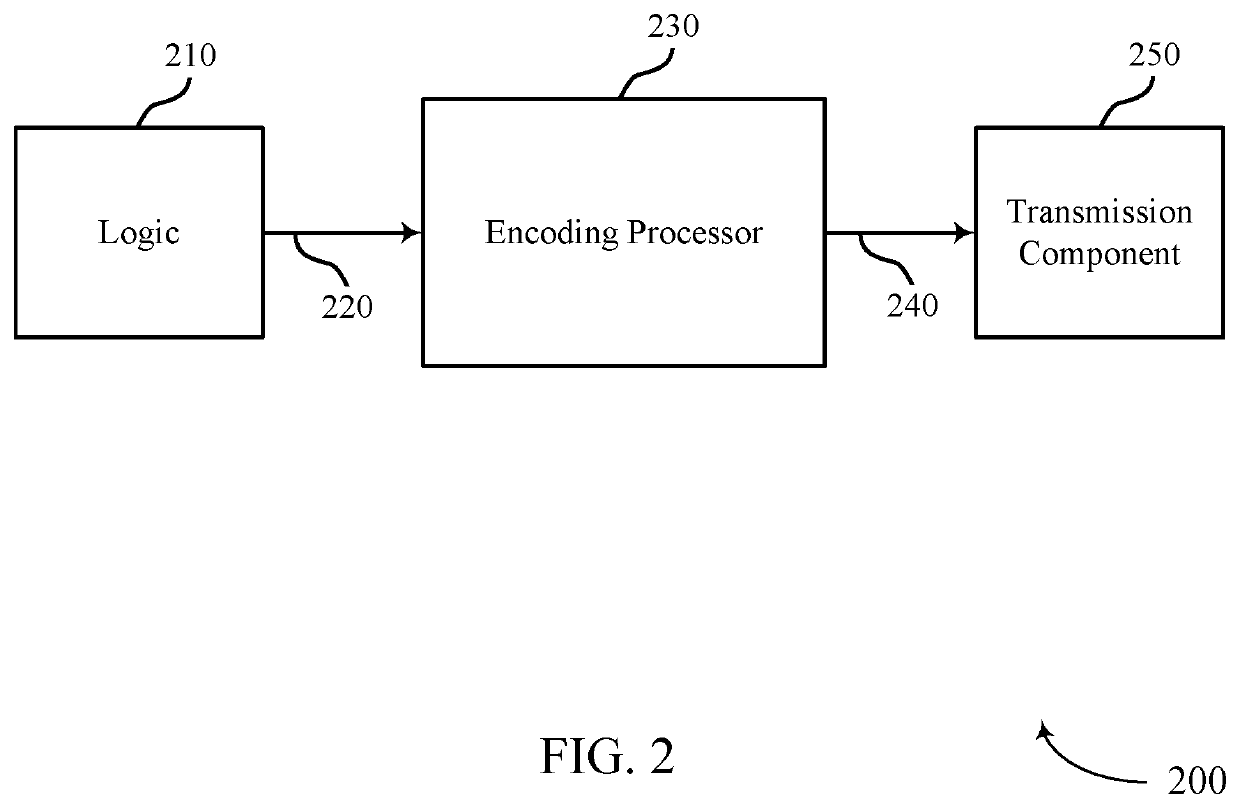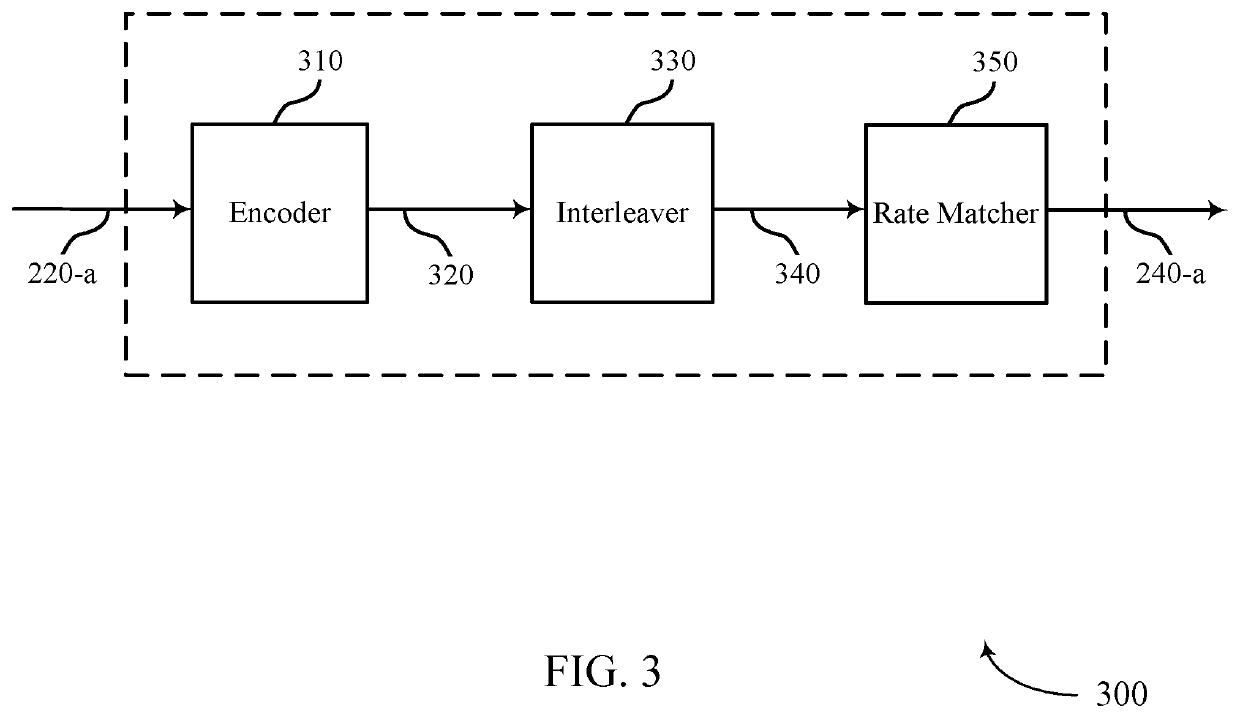Coding to improve transmission and reception processing time
a technology of transmission and reception and processing time, applied in the field of wireless communication, can solve the problems of reducing the effective data rate, affecting the overall system latency,
- Summary
- Abstract
- Description
- Claims
- Application Information
AI Technical Summary
Benefits of technology
Problems solved by technology
Method used
Image
Examples
Embodiment Construction
[0034]The described aspects relate to coding to improve transmission and reception processing time. Encoding of an input vector may begin prior to all bits of the input vector becoming available at the encoder. The encoder may output multiple sets of output bits, where each set of output bits corresponds to a set of input bits of the input vector. In some cases, the encoder may output a set of output bits prior to all bits of the input vector becoming available at the encoder. For a first set of output bits, the encoder may be initialized to a known state (e.g., where the encoder is a CC based encoder), while for subsequent sets of output bits, the encoder may be initialized based on one or more bits of a prior input vector. Each set of output bits may be individually processed for transmission in a transmission time interval or transmission symbol period. For example, a set of output bits may be separately interleaved and / or rate-matched to resources of the transmission time interv...
PUM
 Login to View More
Login to View More Abstract
Description
Claims
Application Information
 Login to View More
Login to View More - R&D
- Intellectual Property
- Life Sciences
- Materials
- Tech Scout
- Unparalleled Data Quality
- Higher Quality Content
- 60% Fewer Hallucinations
Browse by: Latest US Patents, China's latest patents, Technical Efficacy Thesaurus, Application Domain, Technology Topic, Popular Technical Reports.
© 2025 PatSnap. All rights reserved.Legal|Privacy policy|Modern Slavery Act Transparency Statement|Sitemap|About US| Contact US: help@patsnap.com



